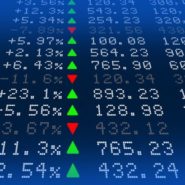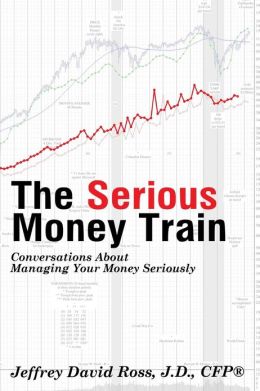
A couple issues ago I noted that one of the media narratives is that that prices are too high to remain optimistic about the market. Well, the market is now even higher (by about 6-8%), so the narrative may seem even more foreboding than before.
In September 2019 I suggested three considerations in response to fears that the market was already too high to make or hold investments. I want to expand on those considerations in this issue:
1) There is not a theoretical upper limit to the market.
Some investors hold the mistaken belief that there is an upper limit to market prices. But, in reality, the market reflects the ever-expanding capacities for human progress, productivity, and profitability. Is there an upper limit to how much money an individual can earn? Is there an upper limit to how much money a corporation can earn? Is there an upper limit to how many companies can be created to supply the world with goods and services? Is there an upper limit to the number of persons who can create value and therefore personal wealth? Is there an upper limit to the number of times a person can buy shares at lower prices and sell at higher prices? Is there an upper limit to how many times a mutual fund manager can buy lower and sell higher?
Of course, the answer to these questions is No, and therefore there is no upper limit to the market indexes. To be sure, this isn’t the same as saying that the market will keep going higher non-stop. What happens in real life is that the path to higher market indexes is continually interrupted by fits of pessimism about the future, resulting in market corrections that set us back every few years between 15% to 20% or more.
2) Market price levels are meaningful primarily in relation to earnings levels.
A natural question then is how does one know if market prices are currently considered high or low. To address this question we first need to recognize that there is no red flag that says for sure the market is too high and there is no green flag that says for sure the market is too low. Next, we need to understand the age-old axiom that market prices are related to earnings: as a company’s earnings increase its stock price should tend to increase as well (but not necessarily in lock-step).
The impact of earnings is typically felt in two ways: 1) the price an investor is willing to pay for each $1 of earnings per share—this is known as the multiple; and 2) whether a company’s earnings is expected to go up or down next quarter or next year or over the next few years.
Market prices reflect not only an expectation of the direction of future earnings but also the willingness to increase or decrease the multiple—that is, pay more or less per $1 of earnings per share.
During pessimistic times investors tend to want to pay less (usually around $10-12) per $1 of earnings per share whereas during optimistic times investors tend to be willing to pay more (usually around $20-25) per $1 of earnings. Currently, the multiple investors are willing to pay is $18 per $1 of expected future earnings.
3) The last 20 years have been historically sluggish.
Despite numerous new highs being made this year the market isn’t much higher than it was almost two years ago, in January 2019. Even more importantly, believe it or not, the market has provided below-average returns over the past 20 years. For example, in November 1999 the S&P500 Index was 1396 and today it is about 3120 for an 4.1% annual compounded rate of return.
Why is this significant? Because the long-term historical rate of return for the market id closer to 8%, 9%, or even 10% (depending on the index one follows). And, if we have been below average for the last 20 years it stands to reason that we are likely to “revert to the mean”, which means simply that we need to have an extended above-average period of time to get back to our long-term historical average.
For these reasons I recommend that we not fear current market prices as being too high. But, having said that, we all need to recognize that markets correct (usually when least expected). In fact, as I’ve written and explained many times, corrections tend to occur on average about every 4 years. But the market making new highs regularly, which it has done hundreds of times over the past 40 years, is not, in itself, a reason to forego optimism going forward.
Hope this helps.
FORWARD LOOKING STATEMENT DISCLOSURE
As a Registered Investment Advisor, one of our responsibilities is to communicate with clients in an open and direct manner. Insofar as some of our opinions and comments are based on current advisor expectations, they are considered “forward-looking statements” which may or may not be accurate over the long term. While we believe we have a reasonable basis for our comments and we have confidence in our opinions, actual results may differ materially from those we anticipate. You can identify forward-looking statements by words such as “believe,” “expect,” “may,” “anticipate,” and other similar expressions when discussing prospects for particular events and/or the markets, generally. We cannot, however, assure future results and disclaim any obligation to update or alter any forward-looking statements, whether as a result of new information, future events, or otherwise. Further, information provided in this letter should not be construed as a recommendation to purchase or sell any particular security.
The Planner’s Edge®: TM & copyright 2019. All rights reserved. No part of this publication may be reproduced in any form, or by any means whatsoever without written permission from the publisher. Serious Money TalksTM is a trademark of The Planner’s Edge®. If you would like further information about the services of The Planner’s Edge®, please call 206-232-4500 or 1-800-735-7302. Email: info@theplannersedge.com.

